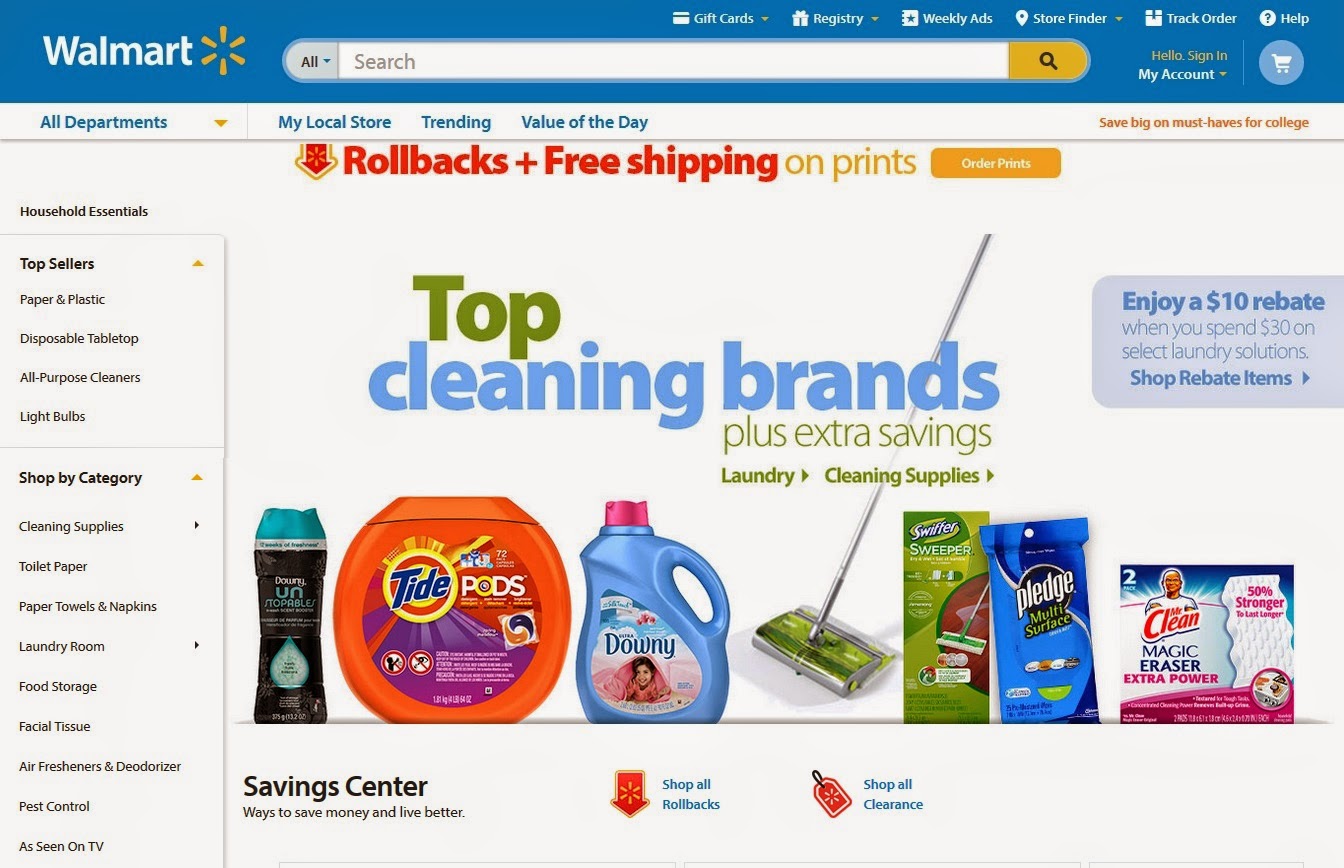Why and How Are Brands Using Retail Media?

Within the dynamic realm of marketing and brand promotion, retail media has emerged as a potent channel, fundamentally transforming the way businesses interact with consumers.
From harnessing first-party insights for relevance to expanding into other digital channels, these and other various strategies are setting the stage for the future of brand promotion and sales in the retail space.
Read on to explore the world of retail media and learn all about the reasons and ways that brands are integrating it into their playbook to drive innovation, foster consumer engagement, and achieve remarkable results.
Key Points
-
Retail media is projected to be the fastest-growing ad channel through 2027, with annual growth exceeding 20%, and US retail media ad spend predicted to reach $109.4 billion in 2027.
-
Factors driving the popularity of retail media include the need for new revenue streams, targeting ready-to-purchase consumers, and moving away from third-party cookies towards privacy-compliant first-party data.
-
Retailers and brands form partnerships to enhance the shopping experience with personalised yet non-intrusive ads but challenges they’re facing include data security concerns and privacy regulations compliance.
The latest insights from Insider Intelligence project retail media will be the fastest-growing ad channel across media through 2027, with annual growth exceeding 20%.
Moreover, it’s predicted that US retail media ad spend will reach $109.4 billion in 2027.
Several factors contribute to the growing popularity of retail media among brands, including:
-
The need to create new revenue streams to drive growth and offset low and fixed sales margins.
-
The desire to reach consumers who are ready to make a purchase.
-
The shift away from third-party cookies prompted by their impending end.
-
Using retail media’s first-party data to comply with privacy laws as much as possible.
The demand for shopper convenience — amplified by the pandemic, technological advancements, and changing consumer preferences — compels retailers to pursue partnerships with brands. These strategic alliances enhance the overall shopping experience, incorporating personalised yet non-intrusive ads.
Establishing an innovative retail media partnership model that brings together retailers, advertisers, and AdTech is vital to ensure sustained growth in the dynamic and competitive realm of retail media, aligning seamlessly with the evolving needs of consumers and advertisers alike.
Now, let’s explore some of the reasons why advertisers favour retail media a bit further.
Navigating the Evolving Privacy Landscape
Although the gradual decline in the use of third-party cookies was originally triggered by Apple’s and Google’s termination of this tracking method, it can also be partially attributed to the strategic responses of brands aiming to adapt to the ever-evolving privacy laws.
In an age where safeguarding consumer information is essential, retail media stands out as being inherently more privacy-compliant compared to other targeting methods, because it relies on first-party data rather than data collected via third-party cookies. Additionally, many retailers utilise data clean rooms for audience matching to further increase their privacy standards.
That’s not to say that forming such alliances with brands is easy for retailers.
Considering the robust security measures required to safeguard user data, not all retailers are able to exchange data with brands, since they don’t have the right technology to carry out this process safely.
Furthermore, retailers tend to be reluctant to share their data based on the understanding that excessive data sharing with too many brands could diminish its value in the evolving landscape of retail media. Retailers also fear letting brands target their audience on lower-grade websites for a lower price.
That’s why brands engaging in retail media partnerships must ensure strict adherence to GDPR and CCPA regulations. This way, they can continue their marketing endeavours with precision and targeting, all while upholding consumer privacy.
Tapping into New Revenue Pools with Closed-Loop Attribution
In essence, closed-loop attribution can be defined as a marketing analytics method that provides a comprehensive understanding of the impact marketing campaigns have on sales.
By embracing closed-loop attribution, businesses can move beyond traditional, one-size-fits-all marketing approaches and tailor their strategies to individual customer journeys.
Closed-loop attribution does share similarities with multi-touch attribution in the sense that it considers how various marketing components work together to influence consumer behaviour and drive sales. However, there are certain differences between the two.
The fundamental contrast between them is that multi-touch attribution assigns credit to multiple touchpoints along the customer journey, but may not necessarily provide a holistic view of how these touchpoints work together to impact sales.
Cross-channel attribution is another kind of attribution that differs from closed-loop attribution.
Closed-loop attribution emphasises the interplay and cooperation between different marketing channels, examining how they complement each other to influence consumer decisions. Cross-channel attribution, on the other hand, focuses on assessing the performance of each channel independently, without necessarily delving into their collective impact.
In practical terms, closed-loop attribution is like a strategic compass that guides businesses in understanding how their investments in various marketing channels, particularly paid ones, actively propel business growth.
This precision in understanding and attributing the impact of each touchpoint results in more informed decision-making, increased marketing effectiveness, and ultimately, a higher return on investment.
Exploring First-Party Retailer Data in a Strategic Shift from Third-Party Cookies
The nearing end of third-party cookies poses a significant challenge for brands, as these tiny bits of data have been instrumental in tracking user behaviour across the web for a long time, enabling targeted advertising and personalised experiences.
The invaluable first-party insights offered by retail media emerge as a solid alternative to third-party cookies for brands seeking to maintain relevance and effectively connect with their target audience.
Customer data provided by retailers serves as a highly useful foundation for crafting campaigns much stronger than generic messaging. This allows brands to tailor their communication strategies to individual preferences and behaviours.
By doing so, brands can create campaigns that resonate on a more personal level, fostering a sense of connection and relatability with consumers. Not only does this enhance the overall shopping experience, but it also enables brands to position themselves strategically in the competitive market by more accurately reaching their target audience, preferably at the point of purchase.
A real-life example of a brand harnessing first-party insights from retailers for relevant ads is the partnership between Procter & Gamble (P&G) and Walmart.
P&G works closely with Walmart, one of the largest global retailers, to collect first-party data on consumer behaviour. Through Walmart’s extensive network of stores and online platforms, P&G gains access to valuable information such as purchase history, product preferences, and demographic data. With the insights gathered from Walmart’s data, P&G creates personalised ad campaigns tailored to different consumer segments.

Unlocking Business Potential with Retail Media Networks
There’s a clear shift happening in traditional advertising approaches as brands come up with creative ways to connect with their target audience.
This shift has led many businesses to explore retail media networks (RMNs) and contribute to developing this area of the retail media landscape. These platforms have opened up exceptional opportunities for brands to boost their visibility and influence.
By providing brands with access to first-party data, RMNs enable them to effortlessly engage with shoppers at the point of purchase, as well as pave the way for more informed marketing campaigns.
Not only does using RMNs enhance the overall shopping experience for customers, due to brands understanding consumer behaviour on a deeper level, but also equips businesses with the tools to make strategic decisions that impact all of their operations.
From finely tuned inventory management aligned with consumer demands to advertising strategies that optimise impact while minimising costs, RMNs offer a higher level of precision and efficiency in the advertising landscape.
Amazon, a prominent e-commerce giant, is at the forefront of harnessing retail media networks through its advertising platform. Brands leverage Amazon Advertising to promote their products within the Amazon ecosystem, integrating advertising seamlessly with the shopping experience.
The rise of RMNs is not confined to Amazon alone; other retailers are swiftly adopting these networks as well. Brands across various industries are recognising the potential of RMNs in boosting their advertising efforts.
This widespread adoption underscores the growing significance of retail media networks in shaping the future of advertising and consumer engagement.
3 Ways How Brands Are Using Retail Media
A paradigm shift took place in 2021, with 23,000 companies forming around 38,000 brands collectively investing a staggering $3 billion in retail media, according to insights from MediaRadar.
This substantial uptick shows that brands are seriously recognising the potential of retail media in amplifying the reach and impact of advertising campaigns. The trend indicates a broader willingness among marketers to explore this dynamic landscape, signalling a shift from traditional advertising models to more innovative and targeted approaches.
In the following subsections, we’ll delve into the specific strategies employed by brands and shed light on the seamless integration of retail media and its features into their advertising playbooks.
Taking Full Advantage of a Retailer’s Website Through Onsite Advertising
Beyond the traditional advertising channels, brands are taking advantage of the benefits that onsite advertising provides, harnessing the potential of advertising on a retailer’s digital properties — e.g. websites, e-commerce stores, and mobile apps.
As consumers increasingly migrate towards online shopping experiences, the significance of a brand’s presence on the virtual storefront becomes impossible to ignore. Ads that are seamlessly integrated into retailers’ digital properties can captivate audiences at crucial points in their purchasing journey.
Using Retail Media Data in Other Digital Channels with Offsite Advertising
The influence of retail media is not confined to traditional advertising channels.
For instance, retailers increasingly explore the realm of connected TV (CTV), like NBCUniversal and Walmart joining forces to evaluate the effectiveness of retail advertising campaigns during live sports broadcasts.
This partnership enables advertisers to access Peacock ad inventory through the Walmart Connect demand-side platform (DSP), highlighting the growing influence of retail media across different digital advertising channels.
Breaking Industry Boundaries with Non-Endemic Advertising in Retail Media
Seeking to expand their market reach, brands are redefining their influence by featuring non-endemic ads in retail media spaces.
Unlike traditional endemic advertising, which is confined to industry-specific platforms, non-endemic advertising involves strategically placing ads in retail media spaces that are not traditionally associated with a particular sector.
Non-endemic advertising allows brands to go beyond the limits of their sector and tap into diverse audiences by featuring their ads in unconventional spaces. For example, a travel agency could advertise on an online retailer’s page about bathing suits, as people looking for these products would also be interested in beach holidays.
By embracing non-endemic advertising, brands step outside the boundaries set by industry-specific content and explore new avenues to showcase their products or services.
Here’s a video explaining how non-endemic ads work on Amazon
Final Thoughts on Brands Using Retail Media
Thank you for reading our article on retail media.
We hope it’s helped you understand why and how brands are using it.
In case you have any questions or comments, drop us a line and you’ll get a reply before long!
Looking for AdTech & MarTech development services?
Discover how our teams can help you design, build and maintain advertising and marketing software.

